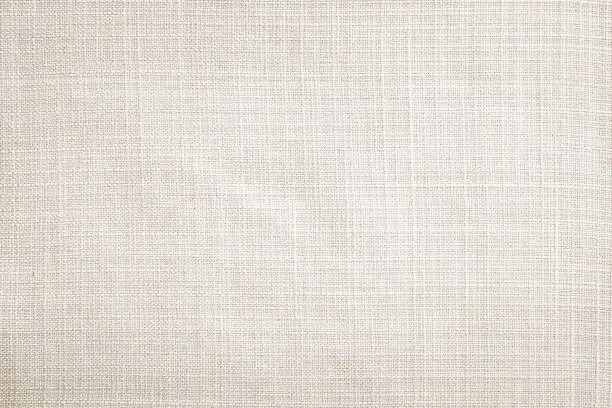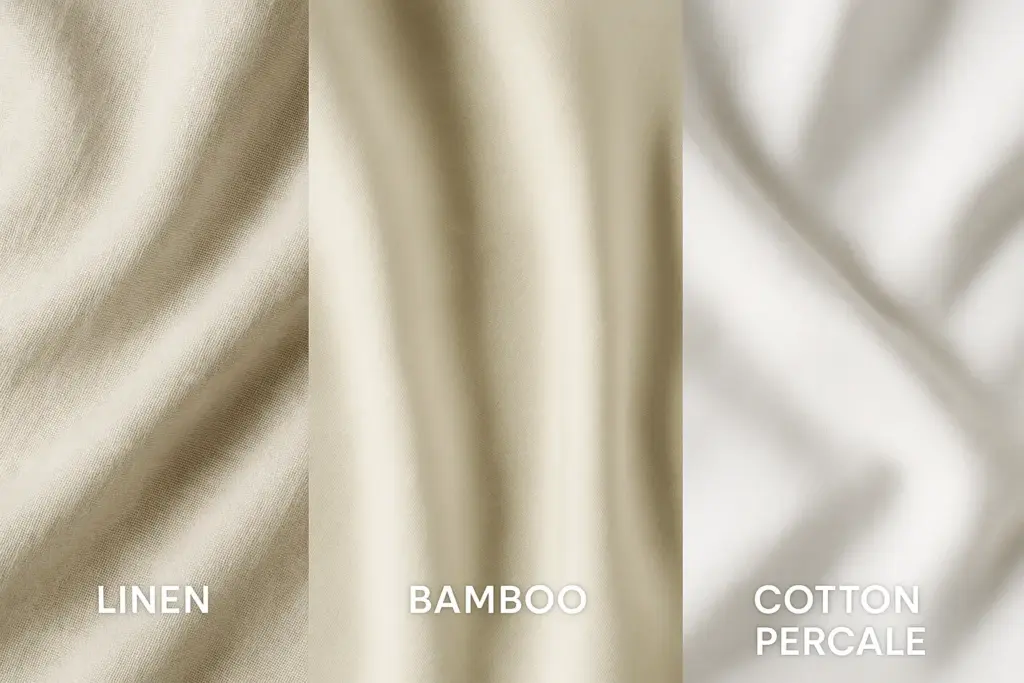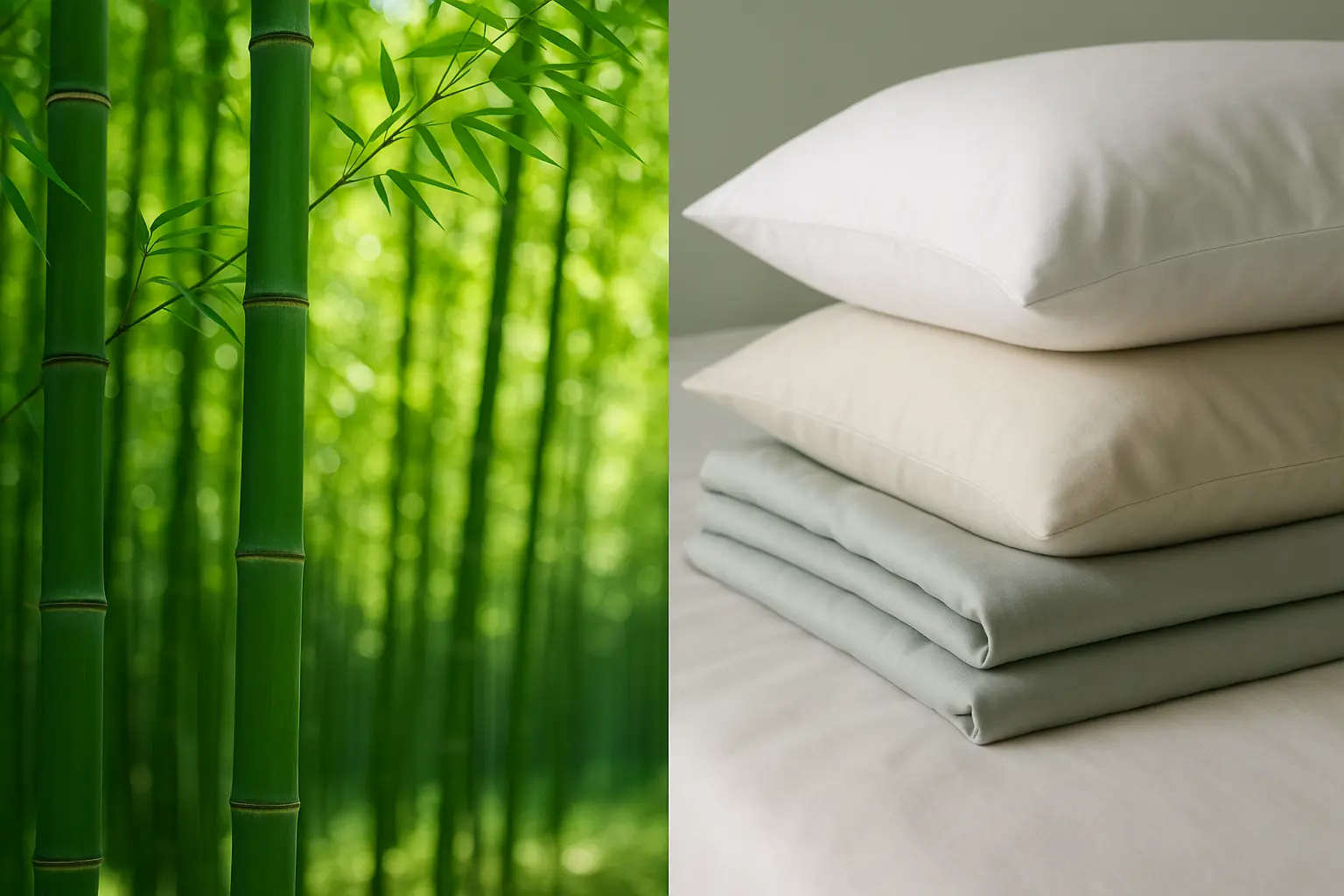침구 산업은 더욱 편안한 착용감, 향상된 성능, 그리고 지속 가능한 관행에 대한 소비자의 요구에 따라 끊임없이 발전하고 있습니다. 이러한 상황에서 대나무 원단 대나무는 고급스러운 부드러움, 실용적인 이점, 그리고 잠재적인 환경적 이점을 모두 갖춘 독특한 조합으로 소비자와 제조업체 모두를 사로잡으며 주요 시장으로 부상했습니다. 혁신을 추구하고 까다로운 시장을 공략하려는 침구 제조업체에게 대나무 섬유의 미묘한 차이를 이해하는 것은 매우 중요합니다.
대나무 원단이란 정확히 무엇인가요?
이름에서 짐작할 수 있듯이 대나무 직물은 일반적으로 생대나무 줄기를 엮어 만들어지지 않습니다. 대신, 보통 재생 셀룰로오스 섬유이 과정은 일반적으로 대나무의 셀룰로스 펄프를 분해하여 섬유로 방사하는 과정을 포함합니다. 가장 일반적인 두 가지 방법은 다음과 같습니다.
대나무 비스코스(또는 레이온)
가장 널리 사용되는 유형입니다. 대나무 펄프는 화학적으로 용해(수산화나트륨과 이황화탄소를 사용하는 경우가 많음)된 후 섬유로 재생됩니다. 이 과정은 효과적이지만, 폐쇄형 순환 시스템에서 화학 물질을 책임감 있게 관리하지 않을 경우 환경 문제가 발생할 수 있습니다.
관련 제품:100% 비스코스 대나무 침대 시트 세트
대나무 리오셀
텐셀™(유칼립투스에서 주로 생산되는 라이오셀 브랜드)과 유사하게, 이 방식은 폐쇄 루프 제조 공정에서 무독성 용매를 사용하며, 물과 용매는 재활용됩니다. 이는 기존 비스코스 생산 방식에 비해 환경 친화적인 방식으로 간주됩니다.
제조업체가 이러한 차이점을 이해하는 것은 소싱 측면에서 매우 중요합니다. 책임감 있게 생산된 대나무 원단 (인증된 폐쇄 루프 시스템의 라이오셀이나 비스코스와 같은)은 진정한 지속 가능성 주장을 위한 핵심입니다.
관련 제품:텐셀 리오셀 유칼립투스 6피스 침대 시트 세트 이불 커버 베개 커버
침구에 대나무 원단을 선택하는 이유는 무엇일까요? 주요 특성 및 장점

대나무 원단은 시트, 이불 커버, 베개 커버와 같은 침구 제품에 매우 적합한 매력적인 특성을 제공합니다.
비교할 수 없는 부드러움: 종종 고급 면이나 실크와 비교되는 대나무 원단은 자연스럽고 매끈한 드레이프와 고급스러운 촉감을 자랑하며, 피부에 닿았을 때 뛰어난 편안함을 제공합니다.
뛰어난 통기성 및 체온 조절 기능: 대나무 섬유의 미세 구조는 미세한 틈으로 채워져 있어 뛰어난 통풍성과 흡습성을 제공합니다. 대나무 침구 통기성이 뛰어나서 여름에는 시원하게, 겨울에는 따뜻하게 잠을 잘 수 있으며, 체온을 효과적으로 조절해줍니다.
뛰어난 습기 배출 기능: 대나무 소재는 면보다 훨씬 더 많은 수분을 흡수하여 몸에서 땀을 빠르게 흡수하고 증발시킵니다. 이는 더위를 많이 타거나 습한 기후에 사는 사람들에게 큰 장점입니다.
저자극성 및 항균 특성: 대나무에는 "대나무 쿤"이라고도 불리는 천연 항균제가 함유되어 있어 박테리아와 악취 발생을 방지하는 데 도움이 됩니다. 대나무 시트 민감한 피부나 알레르기가 있는 사람에게 좋은 선택이며, 더욱 상쾌하고 건강한 수면 환경을 조성하는 데 도움이 됩니다.
내구성: 고품질 대나무 원단은 올바르게 관리하면 튼튼하고 내구성이 뛰어나며, 정기적인 세탁에도 견딜 수 있고 부드러움을 유지합니다.
대나무 원단 vs. 경쟁사: 제조업체를 위한 소재 비교

대나무가 전통적인 침구 재료와 어떻게 비교되는지 이해하는 것은 제품 포지셔닝과 마케팅에 필수적입니다.
1.대나무 vs. 면
- 연성: 대나무는 이집트산이나 피마산과 같은 고급 장섬유 품종을 제외하고는 대부분의 면 종류보다 부드럽고 매끈한 느낌을 줍니다.
- 통기성 및 습기 관리: 대나무는 일반적으로 체온 조절과 습기 배출 측면에서 표준 면보다 성능이 뛰어납니다.
- 지속 가능성: 대나무 ~할 수 있다 더 지속 가능해짐(빠른 성장, 물/살충제 감소) 잠재적으로), 하지만 가공 방식(라이오셀 > 비스코스)에 따라 크게 달라집니다. 일반 면화 재배는 물과 살충제를 많이 사용하지만, 유기농 면화는 더 나은 대안을 제공합니다.
- 비용: 대나무 원단은 일반 면보다 가격이 비싼 편이지만 고급 면과 비교하면 경쟁력이 있습니다.
2.대나무 vs. 마이크로파이버(폴리에스터)
- 기원: 대나무는 식물성(가공된 것)이고, 마이크로파이버는 합성(석유 기반)입니다.
- 통기성: 대나무는 통기성이 훨씬 뛰어납니다. 마이크로파이버는 열과 습기를 가두는 효과가 있습니다.
- 습기 관리: 대나무는 습기를 흡수하는 반면, 마이크로파이버는 습기를 밀어내거나 축축한 느낌을 줄 수 있습니다.
- 느끼다: 둘 다 부드러울 수 있지만, 감촉은 다릅니다. 대나무는 자연스럽고 실크처럼 부드러운 촉감을 제공하는 반면, 마이크로파이버의 부드러움은 합성 소재입니다.
- 지속 가능성: 대나무(특히 라이오셀)는 생분해성이 있습니다. 마이크로파이버는 미세 플라스틱 오염을 유발하며 화석 연료에 의존합니다.
3. 대나무 vs. 리넨
- 느끼다: 대나무는 처음부터 부드럽지만, 리넨은 처음에는 바삭바삭하지만 시간이 지나면서 아름답게 부드러워집니다.
- 주름: 린넨은 매우 쉽게 주름이 잡히고, 대나무는 주름이 적지만 여전히 적절한 관리가 필요합니다.
- 냉각: 둘 다 통기성이 좋아 따뜻한 기후에 적합합니다. 리넨은 특히 시원합니다.
- 지속 가능성: 둘 다 지속 가능한 옵션이 될 수 있습니다(아마는 물/살충제가 거의 필요하지 않습니다).
- 비용: 둘 다 일반적으로 고급 소재로 간주됩니다.
침구 제조업체를 위한 고려 사항
대나무 원단을 제품 라인에 통합하려면 신중한 고려가 필요합니다.
- 소싱 및 투명성: 생산방법의 차이로 인해 추적성 및 인증 가장 중요합니다. 폐쇄 루프 비스코스 공정이나 라이오셀 방식을 사용하는 공급업체를 찾아보세요. OEKO-TEX® Standard 100(유해 물질 없음 인증) 및 FSC(책임 있는 대나무 공급을 위한 산림관리협의회) 인증은 신뢰성을 높여줍니다.
- 비용 요소: 대나무는 고급 소재입니다. 제품 가격 책정 및 타겟 시장 전략에 이 점을 고려하세요.
- 소비자 교육: 부드러움, 통기성, 저자극성 등의 이점과 적절한 내용을 명확하게 전달합니다. 관리 지침 (일반적으로 부드러운 세탁, 낮은 열 건조)를 통해 고객 만족과 제품 수명을 보장합니다.
- 마케팅 각도: 마케팅 캠페인에서 "럭셔리", "편안함", "온도 조절", "저자극성" 및 (해당되는 경우) "지속 가능한" 측면을 활용하세요.
- 블렌딩 잠재력: 특정 가격대나 성능 특성을 달성하기 위해 대나무 섬유를 면이나 텐셀™과 같은 다른 소재와 혼합하는 것을 고려하세요.
결론: 미래는 편안하고 의식적입니다

대나무 직물은 단순한 트렌드 이상의 의미를 갖습니다. 침구 제조 이 소재는 고급스러움과 책임감을 동시에 추구하는 현대 소비자의 요구를 충족하는 다재다능하고 고성능 소재입니다. 부드러움, 통기성, 습기 배출, 저자극성 등의 특징으로 프리미엄 제품을 제작하는 데 이상적인 선택입니다. 대나무 침구 제품.
제조업체는 지속 가능한 공급의 복잡성을 탐색해야 합니다. 대나무 홈텍스타일제품 매력도 향상, 시장 차별화, 친환경 가치와의 연계 등 잠재적 보상은 대나무를 미래의 편안한 수면을 위한 매력적인 섬유로 만듭니다. 대나무의 특성을 이해하고 효과적으로 비교함으로써 제조업체는 대나무를 전략적으로 통합할 수 있습니다. 대나무 원단 성공을 침구 컬렉션에 녹여냈습니다.


답글 남기기